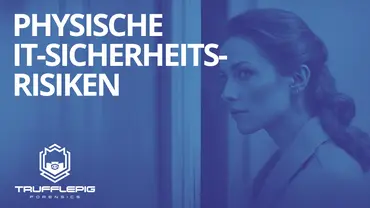Physical red-teaming: When the attack doesn't come digitally - but through the front door.
Our experts simulate real-world physical attacks – from breaking into buildings and social engineering to accessing sensitive data or systems. The goal is to test your physical security measures under realistic conditions – before real attackers do.
How well is your company really protected?
Not against malware, not against ransomware - but against people with real intentions: A badge. A false pretense. A brief moment of carelessness. With Physical red-teaming our experts check how easily an attacker could gain access to your building, server room or confidential information - under realistic conditions.The aim: to simulate an emergency before it happens.
- Gain access
- Obtain information
- Physically compromise IT systems
Possible scenarios
Access via employee ID cards or social engineering
Attempt to gain access through carelessness, lost ID cards or targeted conversation - a friendly demeanor is often enough to open the door.
Manipulation of doors, locks and access controls
Test how effective mechanical and electronic access systems are - including techniques such as tailgating or simple physical bypass.
Disguise as a service provider, technician or supplier
Simulation of classic deception attempts in which attackers pretend to be an external person in order to move freely around the building.
Direct access to end devices or network interfaces
Unattended workstations, open network connections or unsecured server rooms are specifically tested for access possibilities.
Reading out or photographing sensitive data
Visual extraction of information - e.g. by photographing access data, plans, monitor content or documents in printers and meeting rooms.
Why physical red-teaming?
This is how an assignment works
Briefing & target definition
Planning & implementation of the assignment
Debriefing & report
Häufig gestellte Fragen (FAQ)
Ist das überhaupt legal?
Ja – wir führen solche Einsätze ausschließlich mit schriftlicher Freigabe und definierten Grenzen durch. Es handelt sich um kontrollierte Sicherheitsüberprüfungen, keine unerlaubten Tests.
Wer erfährt von dem Test?
Das entscheiden Sie. Häufig ist nur ein kleiner Personenkreis (z. B. CISO, Geschäftsführung) eingeweiht, um realistische Ergebnisse zu erzielen.
Wann und wie lange dauert so ein Einsatz?
Je nach Umfang kann der Einsatz einzelne Stunden bis mehrere Tage dauern – auch nachts oder an Wochenenden, wenn gewünscht.
Welche Nachweise erhalten wir?
Der Abschlussbericht enthält Bilder, Protokolle und Schwachstellenanalysen – alles DSGVO- und compliance-konform dokumentiert.
Wie stellen Sie sicher, dass nichts beschädigt oder kompromittiert wird?
Unsere Spezialisten arbeiten mit der gebotenen Zurückhaltung – alle Maßnahmen sind vorher abgestimmt, zerstörungsfrei und ohne Risiko für laufende Prozesse.
Bieten Sie auch Schulungen oder Awareness-Maßnahmen danach an?
Ja – wir schulen Empfangsbereiche, Facility-Teams oder die IT in Reaktion auf physische Sicherheitsrisiken und zeigen Best Practices im Alltag.
Selected Certifications












